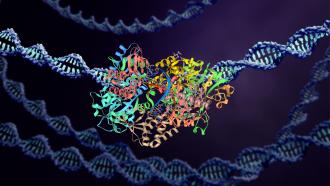
In a recent study published in the journal Microorganisms, researchers from the Banaras Hindu University, India, Rutgers University, USA, and Great Lakes Science Center, USA, have described a close association between microbes and plants that they live in, and how this relationship benefits both. The association, called the ‘rhizophagy cycle’, involves friendly bacteria and fungi that live in the roots of specific plants and help in nutrient transfer.
The term rhizophagy literally translates to 'root eating'. The bacteria and fungi involved in the rhizophagy cycle alternate between two phases—the endophytic phase where they live inside the roots of the plants, and the free-living phase where they live in the soil. The microbes acquire nutrients from the ground in the free-living soil phase. These nutrients are extracted from the bacteria by the plant when they live in its roots.
The researchers of the current study conducted experiments on several species of microbes to determine the details of the rhizophagy cycle. “Bacteria that function in the rhizophagy cycle belong to diverse classes, and it seems likely that any bacterium that colonises roots and can be induced to enter root cells, may be involved in the process,” they say.
The researchers informed that initially, the symbiotic microbes are attracted by the plants around their roots with the secretion of nutritious root exudates. The bacteria and fungi then enter the cells in the tips of the root and live in the space between the cell wall and the plasma membrane. When these cells mature, they secrete harmful reactive oxygen, which degrades some of the microbes inside, and the cells absorb the nutrients from them. Those bacteria and fungi that can survive the stress of oxidation trigger the formation of root hairs and come out from the roots.
Why then do plants eat the hands that feed them? “It seems probable that plants would not be internalising and degrading symbiotic microbes unless critical nutrients were being obtained from the consumption of those microbes”, remark the researchers.
Although we don’t yet know about the exact nutrients that plants acquire from the rhizophagy cycle, this process is crucial to the plants, the researchers hypothesise. “While rhizophagy has been shown to increase movement of nitrogen into plants, we hypothesise that the real benefit of the rhizophagy cycle may be in the acquisition of iron and other micronutrients from symbiotic microbes, although this must be proven”, they add. Other than the nutrients, the microbes also provide additional benefits like promoting development, resistance from disease and some other stresses.
Is there any benefit for the microbes in this entire process? “Microbes engage in the rhizophagy symbiosis likely because they also benefit from the nutrients provided by host plants. The rhizophagy symbiosis may be viewed as a mutualism involving an exchange of nutrients between the plant and microbe participants”, comment the researchers.






